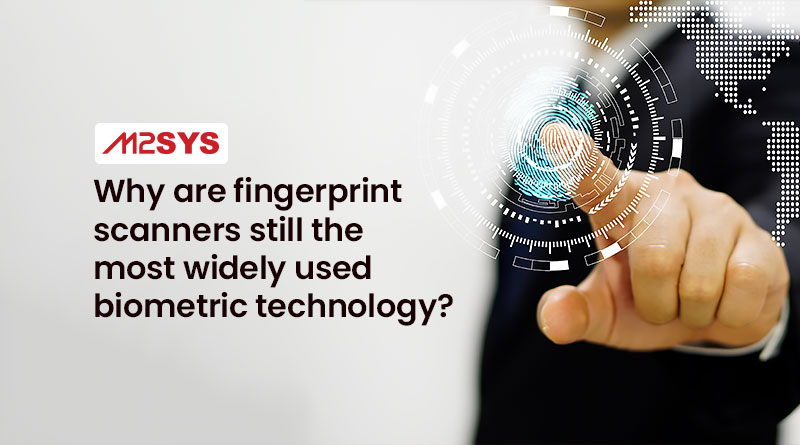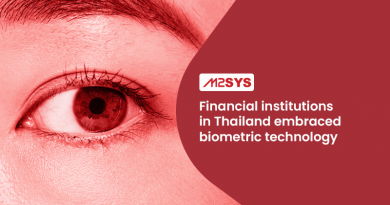Why are fingerprint scanners still the most widely used biometric technology?
Fingerprint recognition is already well established. Law enforcement and forensics were among the first agencies to successfully employ this technology. The use of fingerprint recognition technology by major government entities stimulated innovation and brought in top technological professionals. Since government agencies used it, funding for research and development was never an issue. It expedited invention, and fingerprint scanners are now commonly available in personal electronic gadgets.
Even today, fingerprint scanners are widely available throughout the world, something that other biometric modalities have yet to achieve. The popularity and demand for fingerprint scanners have also attracted an increasing number of companies to develop similar devices. Intense competition has also pushed fingerprint scanner makers to provide more affordable devices, attracting more customers and continuing the cycle.
As a result, fingerprint scanners are now widely available. There are well-known brands, as well as newbies you may have never heard of. Fingerprint scanners are available for purchase online or at your local store. Although the latter may not offer other biometric devices like iris or facial scanners, it is quite likely to have a good selection of fingerprint scanners.
Can the price of something influence its popularity?
Yes, the cost can be an important factor in deciding the market success of a product or technology.
Though cost should never be used to evaluate a biometric modality’s security and effectiveness, the price of a biometric scanner does make a difference. There is no problem if you just want the best and are willing to pay whatever it takes. However, in most cases, that is not a viable option. Budget is usually a big consideration in high-security facilities and government organizations. Thus, it’s no surprise that government agencies allocate contracts to the lowest bidder.
The popularity of fingerprint scanners has encouraged manufacturers to mass-produce them. Mass production and economies of scale have indeed aided manufacturers in lowering costs as they can make a profit by selling more products rather than keeping them expensive.
Fingerprint scanners are not only less expensive than most other biometric modalities, but they also deliver the best ROI.
Government initiatives for biometrics
The good news is that many governments throughout the world have recognized the shortcomings of printed IDs and are now considering biometrics to establish the strong identification for their citizens. People are becoming increasingly aware of technology as governments shift their stance on identity and authentication.
However, it has inherent security flaws, like fraudulent or manipulated IDs, a lack of infrastructure to verify their authenticity, and, of course, the requirement to carry them. Losing your ID implies losing the tool for validating your identity, which can cause a lot of problems for the person who owns it.
Government agencies have traditionally been recognized for producing printed IDs, which they need people to carry in order to meet their identification or identity authentication requirements. This method has been around for a long time and is still the primary form of identity authentication in many parts of the world.
Many countries have adopted the concept of biometric identity for their citizens and residents in recent decades. Border control biometrics and air travel biometrics have also grown in popularity.
Mobile phones with biometric capabilities are engaging in a wide range of services via apps, which will take center stage in future e-governance applications.
Governments have undertaken substantial initiatives, such as large-scale biometric collection campaigns, the use of biometrics in civil identity applications, and permitting the use of biometrics to access government services. These government initiatives have helped biometrics gain market share and gain popular acceptance.
Governments all around the world are increasingly using biometrics to establish their citizens’ identities and authenticate them with biometrics when necessary. Several countries, notably those with developing and underdeveloped economies, are conducting large-scale biometric identity campaigns.
Changing customers’ perceptions of fingerprint scanning technologies
Fingerprint recognition faced major social unacceptability a few decades ago since it was associated with criminal identification. Not only was it the first biometric modality to be utilized for this purpose, but it is still used in forensics and law enforcement. Fingerprint capture was once something you would only see when there was a criminal arrest or involvement in a criminal investigation.
However, after some resistance, people increasingly embraced fingerprint recognition for civil identity reasons, such as biometric voter identification, border control, citizenship cards, biometric smartcards, and so on.
To some extent, government actions helped fingerprint scanning overcome its societal unacceptability. Nevertheless, the real breakthrough occurred with the emergence of mobile biometrics. After the release of the first Apple iPhone with a fingerprint sensor, which altered the way consumers unlocked their phones and confirmed their identities on apps, smartphones with fingerprint scanners became the norm. Consumer perceptions about fingerprint scanning technology have shifted as a result of mobile phones.
A study on Consumer Attitudes About Biometric Authentication was conducted by the University of Texas Center for Identity. The study discovered that of all biometric modalities included in the study, fingerprints were the one with which most people were most comfortable. Indeed, as much as 58 percent of participants indicated they were “very comfortable” supplying their fingerprints in a biometric form, and 28 percent of participants said they were “somewhat comfortable” with it. Not only that, but the study also stated:
“Fingerprints were rated as the most comfortable by 67% of individuals, while facial recognition was rated as the least comfortable by 35%. This could be influenced by the widespread use of fingerprint biometric technology in smartphones and other devices, as well as unfavorable media coverage of the use of facial recognition software for tracking and surveillance.”
This study demonstrates how customer attitudes regarding fingerprint identification are changing, which explains why fingerprint scanners remain the most popular biometric equipment.
You have many options with fingerprint scanners
When selecting a fingerprint scanner for your applications, there are several sensing technologies to choose from, giving you more options.
Fingerprint scanning technology gives you more flexibility since you can select the sensor technology that best suits your case. Not only that, but you can also pick between a static fingerprint scanner, which requires you to place your finger on the sensing surface, and a fingerprint scanner with swipe-type sensing, which scans your fingerprint by swiping across the sensor strip. Thermal scanning is frequently used by swipe-type scanners to read your fingerprint.
Each sensing technology has its own set of advantages and disadvantages. For example, an optical sensor is inexpensive yet vulnerable to spoofing attacks. Although capacitive fingerprint scanners are said to be more secure than optical scanners, they can be more sensitive to finger skin conditions, like contaminants or wetness. Ultrasonic fingerprint sensors, on the other hand, are not only more secure than optical and capacitive sensor types, but are also unaffected by finger contamination.
Unlike optical fingerprint sensors, which use a digital camera with an entire internal reflection and a prism to capture your fingerprint, capacitive fingerprint sensors scan your fingerprint using a series of small capacitor circuits. Ultrasonic fingerprint sensors, on the other hand, read your fingerprint using ultrasonic sound waves.
Fingerprint scanners read fingerprints, and, in order to do so, must use sensing technology. They allow consumers to select a scanner with the sensing method of their choice. Optical sensing, which is utilized in a wide range of fingerprint scanners, is the oldest and most widely used sensing modality. Although there are numerous fingerprint sensing technologies, capacitive and ultrasonic sensing are the two most popular sensing technologies found in fingerprint scanners.
Conclusion
Despite the rise of various biometric technology and gadgets, fingerprint scanners remain relevant due to the benefits they provide. Furthermore, they are currently more popular than ever. According to the University of Texas, Center for Identity study, individuals are more comfortable with fingerprints than any other modality. Hence, the popularity of fingerprint scanners is expected to rise.
M2SYS is one the best biometric solution providers that hold a prominent position in the biometric industry. The company aims to revolutionize the industry by providing advanced solutions that goes well with the fingerprint scanners.












Very well explained the topic, I am wondering if you had explored more on point no 5, it wud be more helpful . Anyways I am loving your blog.